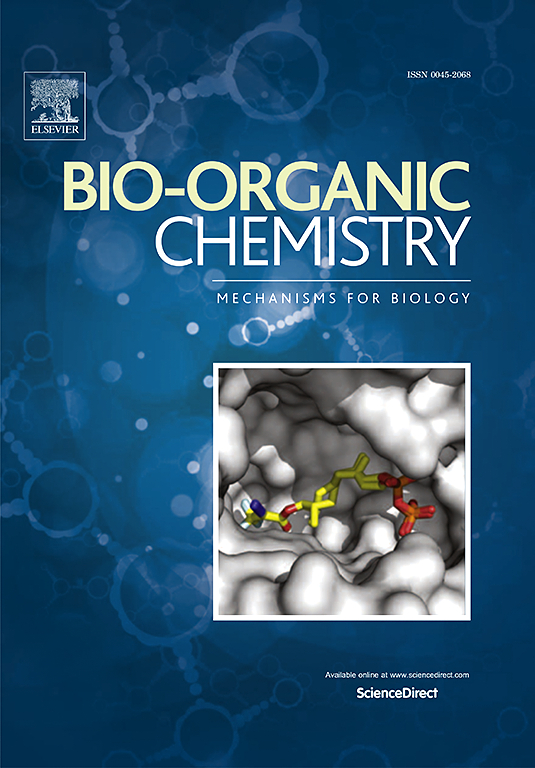Discovery of novel adjuvants: Identification of saponins from Hylomecon japonica (Thunb.) Prantl & Kündig and insights into their in vitro and in vivo activities.
IF 4.5
2区 医学
Q1 BIOCHEMISTRY & MOLECULAR BIOLOGY
引用次数: 0
Abstract
Bioassay-guided approach resulted in the isolation of fourteen triterpenoid saponins were isolated from the herba of Hylomecon japonica (Thunb.) Prantl & Kündig including eight novel saponins (1–8) and six known saponins (9–14). Their chemical structures were unequivocally determined through comprehensive spectral data analysis. By screening all compounds to enhance the ability of RAW 264.7 cells to produce NO, the novel compound 1 (HA) was identified as a candidate for immune adjuvant. In vitro experiments demonstrated that HA promotes the proliferation of spleen lymphocytes, DC 2.4, and RAW 264.7 cells, while also enhancing the phagocytic activity of DC 2.4 and RAW 264.7 cells. HA also counteracts the LPS-induced decline in dendritic cell phagocytosis and works with LPS to further improve macrophage phagocytosis. The network pharmacology analysis identified a total of 46 targets and 20 pathways through which HA exerts its immune-enhancing effects. In vivo experiments, HA enhanced immune organ development, boosted specific serum antibodies, increased Th1 and Th2 cytokines, and amplified related gene expression. And HA could boost lymphocyte proliferation, increased CD3+ T cells and altered CD4+ and CD8+ levels. It also promoted dendritic cell maturation in lymph nodes, raised MHC II molecules and co-stimulatory factors. HA triggered the upregulation of TL4, MyD88, and IKK proteins and promoted the phosphorylation of NF-κB P65 and P-IkBα within the TLR4/NF-κB signaling pathway, while simultaneously suppressing IκBα protein expression. HA has the characteristics and functions of enhancing immunity and could be applied as an immune adjuvant. The findings presented herein establish a fundamental basis for investigating the immune adjuvant effect of triterpenoid saponins.

新型佐剂的发现:金银花皂苷的鉴定Prantl & kndig以及对其体外和体内活性的见解。
以生物测定法为指导,从金银花(Hylomecon japonica, Thunb)中草药中分离到14个三萜皂苷。Prantl,k ndig包括8种新皂苷(1-8)和6种已知皂苷(9-14)。通过全面的光谱数据分析,明确了它们的化学结构。通过筛选所有增强RAW 264.7细胞产生NO能力的化合物,确定了新化合物1 (HA)作为免疫佐剂的候选化合物。体外实验表明,HA能促进脾淋巴细胞、DC 2.4和RAW 264.7细胞的增殖,同时增强DC 2.4和RAW 264.7细胞的吞噬活性。透明质酸还能抵消LPS诱导的树突状细胞吞噬能力下降,并与LPS共同作用,进一步改善巨噬细胞的吞噬能力。网络药理学分析确定了HA发挥其免疫增强作用的46个靶点和20个途径。在体内实验中,透明质酸促进免疫器官发育,增强特异性血清抗体,增加Th1和Th2细胞因子,并扩增相关基因表达。透明质酸可以促进淋巴细胞增殖,增加CD3+ T细胞,改变CD4+和CD8+水平。它还促进了淋巴结树突状细胞的成熟,提高了MHC II分子和共刺激因子。HA触发TL4、MyD88和IKK蛋白上调,促进TLR4/NF-κB信号通路中NF-κB P65和P-IkBα磷酸化,同时抑制i -κB α蛋白表达。透明质酸具有增强免疫的特性和功能,可作为免疫佐剂应用。本研究结果为进一步研究三萜皂苷的免疫佐剂作用奠定了基础。
本文章由计算机程序翻译,如有差异,请以英文原文为准。
求助全文
约1分钟内获得全文
求助全文
来源期刊

Bioorganic Chemistry
生物-生化与分子生物学
CiteScore
9.70
自引率
3.90%
发文量
679
审稿时长
31 days
期刊介绍:
Bioorganic Chemistry publishes research that addresses biological questions at the molecular level, using organic chemistry and principles of physical organic chemistry. The scope of the journal covers a range of topics at the organic chemistry-biology interface, including: enzyme catalysis, biotransformation and enzyme inhibition; nucleic acids chemistry; medicinal chemistry; natural product chemistry, natural product synthesis and natural product biosynthesis; antimicrobial agents; lipid and peptide chemistry; biophysical chemistry; biological probes; bio-orthogonal chemistry and biomimetic chemistry.
For manuscripts dealing with synthetic bioactive compounds, the Journal requires that the molecular target of the compounds described must be known, and must be demonstrated experimentally in the manuscript. For studies involving natural products, if the molecular target is unknown, some data beyond simple cell-based toxicity studies to provide insight into the mechanism of action is required. Studies supported by molecular docking are welcome, but must be supported by experimental data. The Journal does not consider manuscripts that are purely theoretical or computational in nature.
The Journal publishes regular articles, short communications and reviews. Reviews are normally invited by Editors or Editorial Board members. Authors of unsolicited reviews should first contact an Editor or Editorial Board member to determine whether the proposed article is within the scope of the Journal.
 求助内容:
求助内容: 应助结果提醒方式:
应助结果提醒方式:


